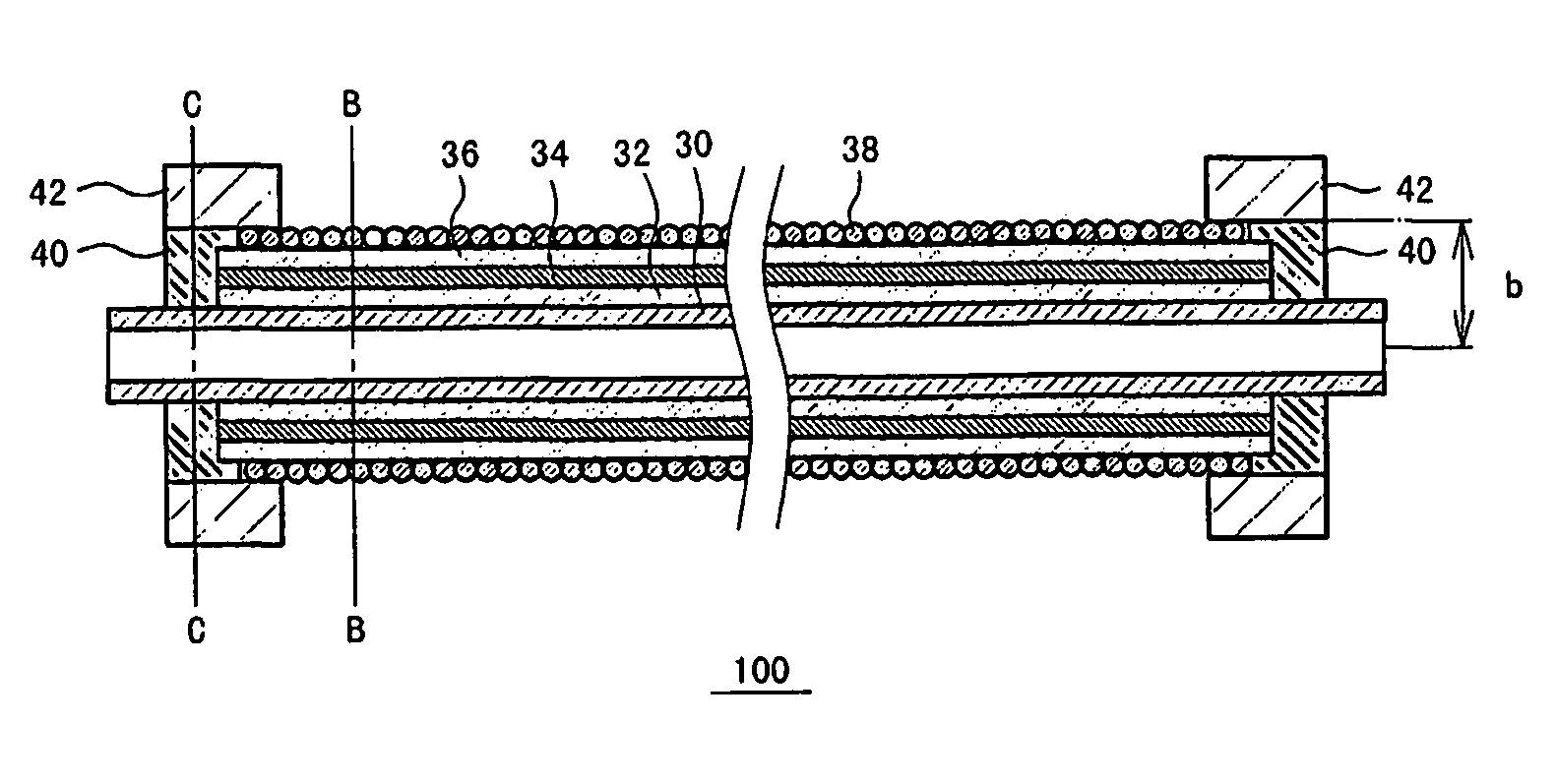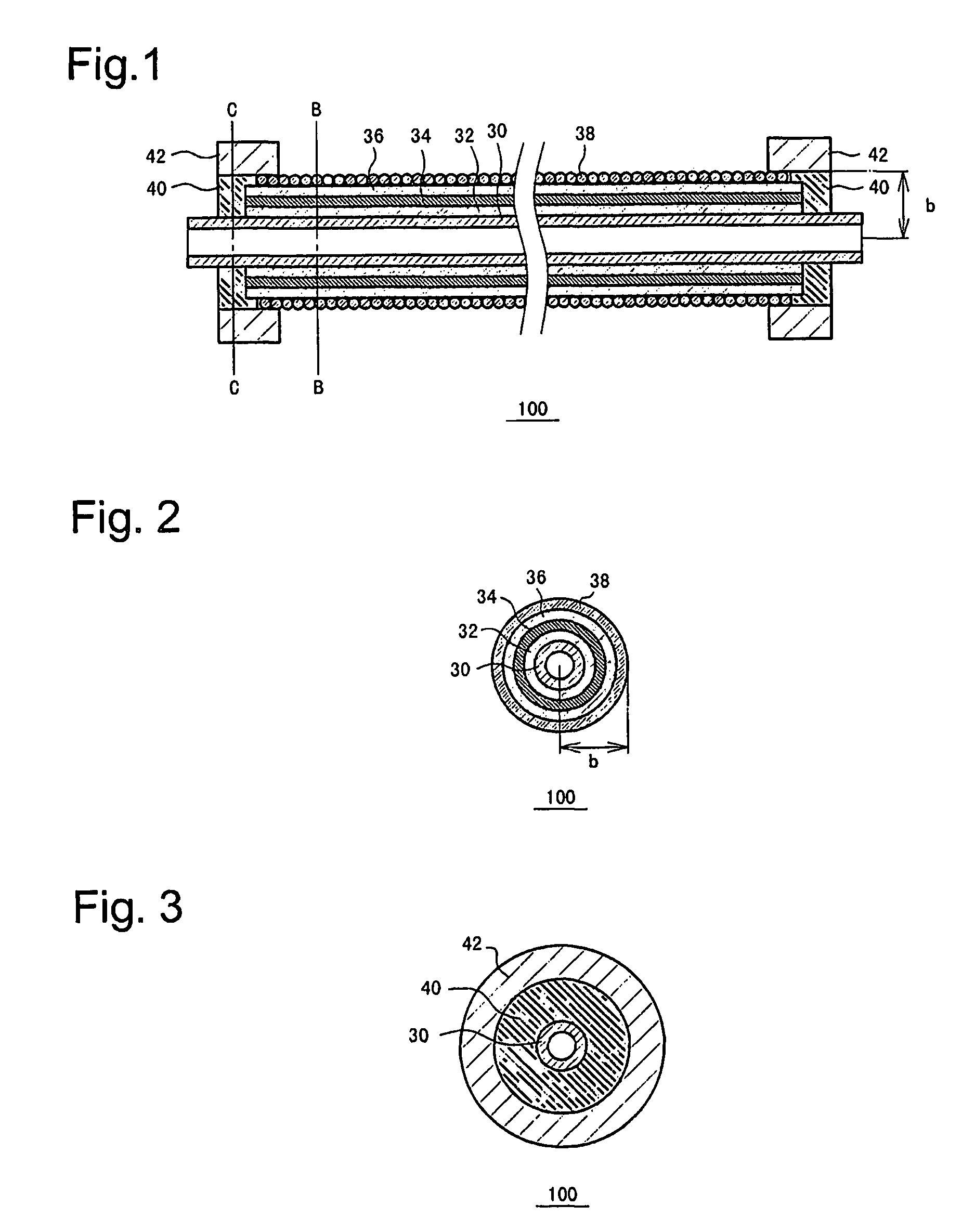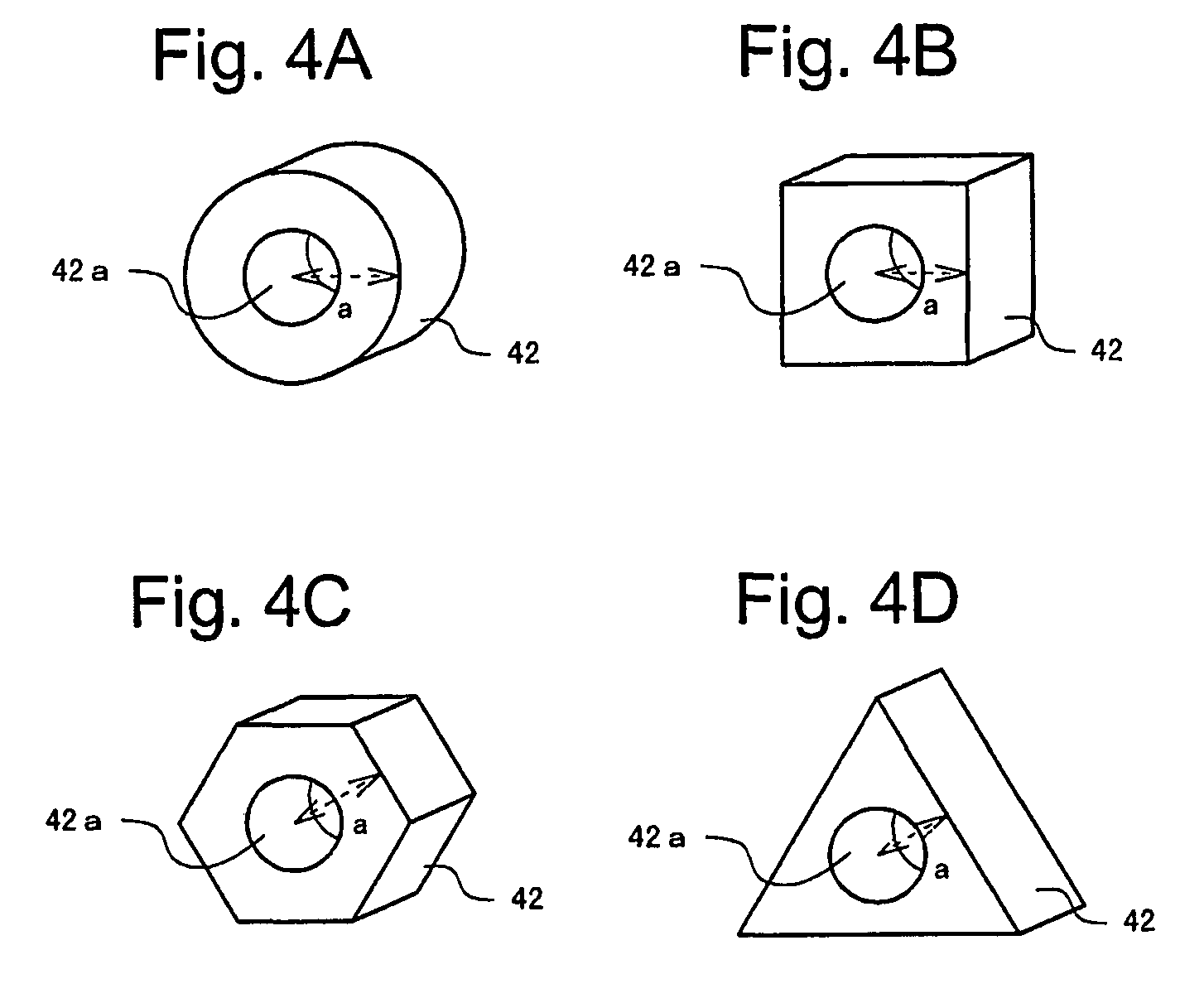Tubular fuel cell and fuel cell module
a fuel cell and tube-type technology, applied in the manufacture of cell components, cell component details, final product manufacturing, etc., can solve the problems of obstructing the efforts to miniaturize the fuel cell module, affecting the production of inexpensive fuel cell modules, and complicated connections of current collecting wires, so as to achieve a simple and less expensive manufacturing of spacers.
- Summary
- Abstract
- Description
- Claims
- Application Information
AI Technical Summary
Benefits of technology
Problems solved by technology
Method used
Image
Examples
example modification
[0054]FIGS. 6 and 7 show, in cross sectional view, tubular fuel cells 102 and 104 according to modified examples of the present embodiment. In the modified examples, a part of the exterior coil 38 is wound so as to have an outside diameter a greater than the outside diameter b of the other part of the exterior coil 38 wound around the outer circumferential surface of the second catalytic layer 36, thereby defining the part of the exterior coil 38 as the spacer 42. For example, as shown in FIGS. 6 and 7, each end of the exterior coil 38 wound around the outer circumferential surface of the second catalytic layer 36 may be extended and wound around the outer circumferential surface of the resin seal 40, to configure the end of the exterior coil 38 as the spacer 42.
[0055]Here, in a case where the outside diameter of the resin seal 40 is equal to that of the second catalytic layer 36 as shown in FIG. 6, when the exterior coil 38 is wound around the outer circumferential surface of the s...
PUM
| Property | Measurement | Unit |
|---|---|---|
| diameter | aaaaa | aaaaa |
| diameter | aaaaa | aaaaa |
| radius | aaaaa | aaaaa |
Abstract
Description
Claims
Application Information
 Login to View More
Login to View More - R&D
- Intellectual Property
- Life Sciences
- Materials
- Tech Scout
- Unparalleled Data Quality
- Higher Quality Content
- 60% Fewer Hallucinations
Browse by: Latest US Patents, China's latest patents, Technical Efficacy Thesaurus, Application Domain, Technology Topic, Popular Technical Reports.
© 2025 PatSnap. All rights reserved.Legal|Privacy policy|Modern Slavery Act Transparency Statement|Sitemap|About US| Contact US: help@patsnap.com



